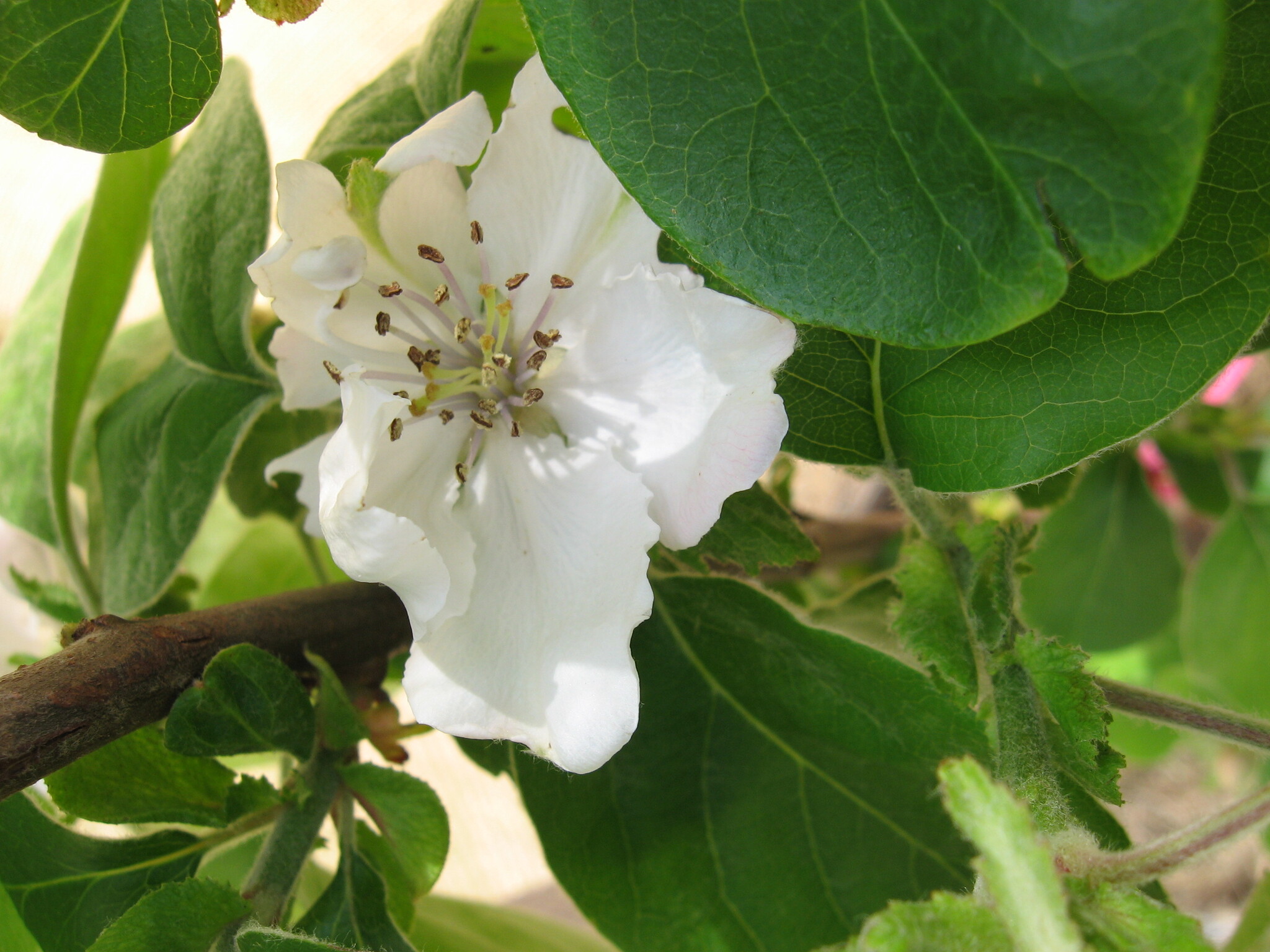
Deciduous, thornless, suckering shrubs or small trees. Young shoots felted. Leaves entire, ovate to oblong, to 10 cm long, with a hairy felt below; stipules linear, soon shed. Plants self-fertile. Flowers solitary on current season's growth, white or pink. Sepals hairy, toothed. Stamens 15-25. Ovary inferior. Carpels 5, united in the fruit and with cartilaginous separating walls; styles 5, free. Fruit a pear- or apple shaped, hairy, aromatic, yellow-fleshed pome with persistent sepals.
Quince is not used in cooking so much nowadays but the flesh, which is dark red when cooked, makes an excellent jelly conserve and may also be stewed. The mature fruits have an appealing fragrance. Quince was among the first plants brought to Australia and grown at Farm Cove. In ancient times it was used as an aphrodisiac and is probably the 'forbidden fruit' of the tree of knowledge eaten by Adam and Eve in the Garden of Eden.
W Asia.
Cooking. The raw quince is unpalatably astringent.
Source: (2002). Rosaceae. In: . Horticultural Flora of South-eastern Australia. Volume 3. Flowering plants. Dicotyledons. Part 2. The identification of garden and cultivated plants. University of New South Wales Press.

Fast growing and with large fruit early in the season. Originated in Serbia.
Fruits medium-sized and pear-shaped to round, golden when ripe. The flesh is dark red with a mild flavour when cooked, maturing early to mid-April. Originated in the usa.
Fruits very large and pear-shaped, pale yellow when ripe. Flesh tender and sweet when cooked. Matures early to mid-April. Originated in Turkey.